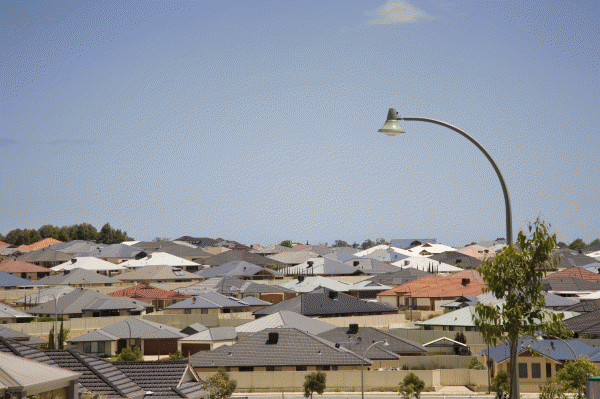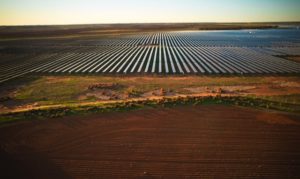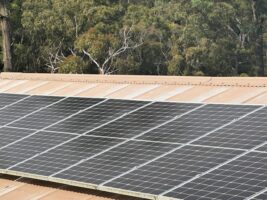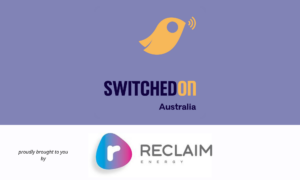With the last of the subsidised PV markets in Australia subsiding, a new reality for residential and commercial PV is emerging. While true that the REC regime is still in place, the falling price of solar arrays and high and rising electricity prices have lead to a truly economic market for solar.
Part of this evolution is the introduction of solar leases to the market. If the primary purpose of the PV array is not to pump maximum volume back into the grid for a high FIT, but bring down electricity through self consumption of PV, leasing presents as a potentially good solution.
Solar leases effectively remove the upfront cost barrier to entry for potential residential and commercial PV consumers, with an array simply delivering below-retail price electricity over a set period. A further advantage is that it provides a hedge to the consumer against future price rises for utility-provided electricity.
Given this backdrop, PV companies have been keen to introduce solar leasing products into the Australian market. A number of module manufacturers, PV developers and installers and a US solar leasing provider have all entered the market, with various offerings, of late.
Sungevity introduces its solar lease
Californian based solar lease and online PV sales provider Sungevity entered the Australian market in Q4 2012 and reports good interest in the range of ‘nothing up front’ PV system offerings it has on offer.
Sungevity partnered with the New South Wales based installer Nick Lake to make market entry in Australia. Lake is now the Managing Director of Sungevity Australia. Sungevity first went to market, in terms of nothing-up-front PV, with a seven-year loan product. It has now expanded that with a 15-year pay-as-you-go agreement and will introduce the Sungevity solar lease in Q1 2014.
Sungevity’s Lake says that the staggered roll out of the company’s nothing-up-front offerings has been due to the time taken to secure debt financing for PV from Australian financial institutions. “It really has been a struggle to get the financing happening here in Australia – without the tax equity funding the US market has enjoyed,” said Lake. “There has been a lot of people doing good background work on this, and we’re only seeing now seeing the fruits of that labor.”
There have been reports from some Australian solar installers and developers that some PV retailers have been selling substandard PV modules and components. Certainly some little-known Chinese module manufacturers have been supplying the Australian market, often with product rebadged for sale in Australia.
Nick Lake, from Sungevity, says that the process of getting the banks involved in providing finance for PV arrays over an extended period will mean that the need for quality components will become increasingly important. Quality goes right to the heart of bankability,” said Lake. “Once you are bringing on financiers, they want to know that the equipment they are financing are going to last and do the job without headaches. So if you want to bring in banks and debt financing to this and eventually through to securitization, you are going to need to use reputable suppliers and assurances of good warranties.”
Trina introduces a lease
Last month Chinese manufacturer Trina Solar sought to consolidate its Australian market leading position, as a module supplier, by introducing a solar leasing scheme. Trina Solar Australia created the company Lightleasing to roll out its leasing service. The offer is being introduced into the market in Q4, 2013.
Installer Infinity Solar will roll out the scheme for Trina and Lightleasing, with Infitity’s Group Director Chris Thomson echoed the sentiment of Sungevity’s Lake, saying that by removing upfront costs, customers now have the opportunity to install a “high quality PV system.” “With a really low interest rate, in most cases, the energy savings generated by the solar system will dramatically reduce power bills, and cover the monthly loan repayment so customers are expected to save money from day one,” said Thomson.
The leasing scheme will provide both businesses and residential consumers the opportunity to install a PV system without upfront costs. Lightleasing provides a performance guarantee and “flexible lease terms, maintenance and insurance included,” the firms announced in a statement.
Commercial offering
While the Trina and Sungevity offers are catered to commercial customers, a Western Australian installer and solar developer is taking a different route to market with a leasing product. Perth based Infinite Energy has made an application to the state’s regulatory authorities to become an independent electricity retailer.
Once granted a license, Infinite Energy would be able to offer commercial sized solar installations under a PPA agreement. Infinite Energy’s Managing Director Aidan Jenkins said that under such a PPA, for most businesses, a PV installation can be revenue positive from day one, with the business owning the installation after the PPA concludes.
Infinite Energy’s Jenkins said that in the current market, a solar installation can offer a return of around 30 to 40% and capital constraints for many businesses prevent them from purchasing a commercial PV installation. “The economics of PV in Perth are compelling, there is huge production, in terms of kWh/kWp and electricity prices are as high as AUD0.35 / 0.40/kWh,” said Jenkins. He anticipates that the additional offering of being able to offer an upside on a businesses balance sheet on day one should be a major selling point for businesses.
Queensland leases
Queensland’s reputation as a leading PV state is well known and Brisbane based installer and project developers Ingenero last month announced a partnership with Thorn Money, to release its Energy Access solar lease product to consumers. Thorn Money is an Australian firm that provides personal and commercial financial products, including rental for household goods.
In announcing the partnership, Ingenero CEO Steve McRae said that solar leasing in Australia would build on the success of the service in the U.S. market. “By partnering with leading Australian financial services provider Thorn Money, we will be able to make solar power more accessible to Australian homeowners and businesses,” said McRae.
Ingenero has previously made a solar leasing product available, in a campaign with NGO Green Cross Australia.
SunPower leads the way
While all the activity of late in terms of solar leasing has been catching the eye of industry observers, California’s SunPower had been developing a solar lease product for the Australian market for some time.
SunPower’s solar leasing product was introduced in August of this year, in partnership with Community First Credit unit. Indicative of the high cost, high efficiency product that SunPower offers, financing of up to $35,000 over a ten year period is on offer.
In a release announcing the product, SunPower CEO Tom Werner said the Australian residential solar market was ready for innovative financing solutions. “By combining SunPower’s leading solar technology with Community First’s financial expertise, we’re offering customers in Australia the world’s most efficient solar power systems with no upfront system costs and significant energy savings over time,” said Werner.
Jonathan Gifford is an Australian cleantech journalist and an editor with PV Magazine, based in Berlin, Germany. Parts of this article first appeared at pv-magazine.com. You can follow Jonathan on twitter on @jonogifford.










